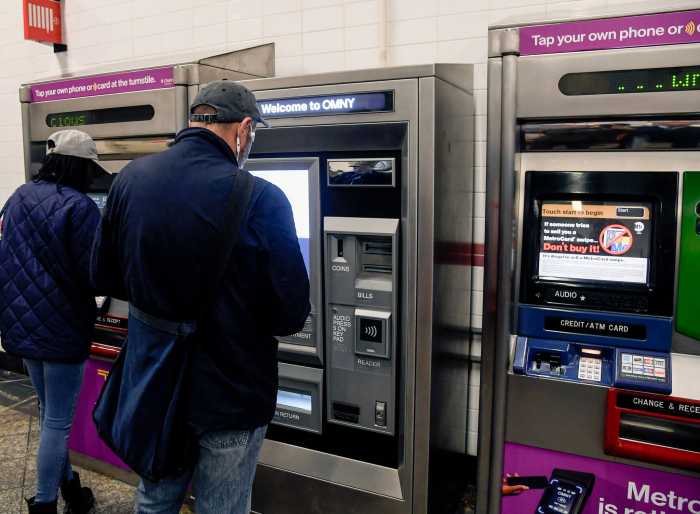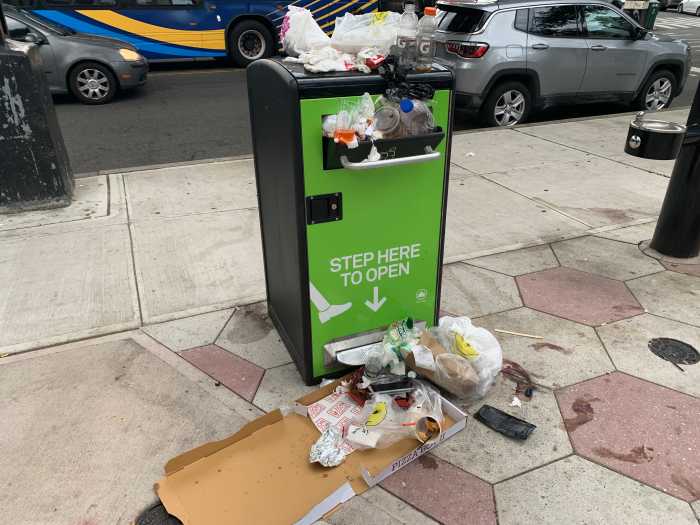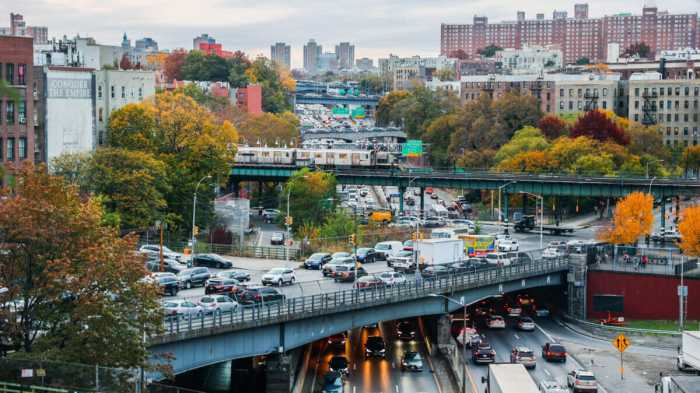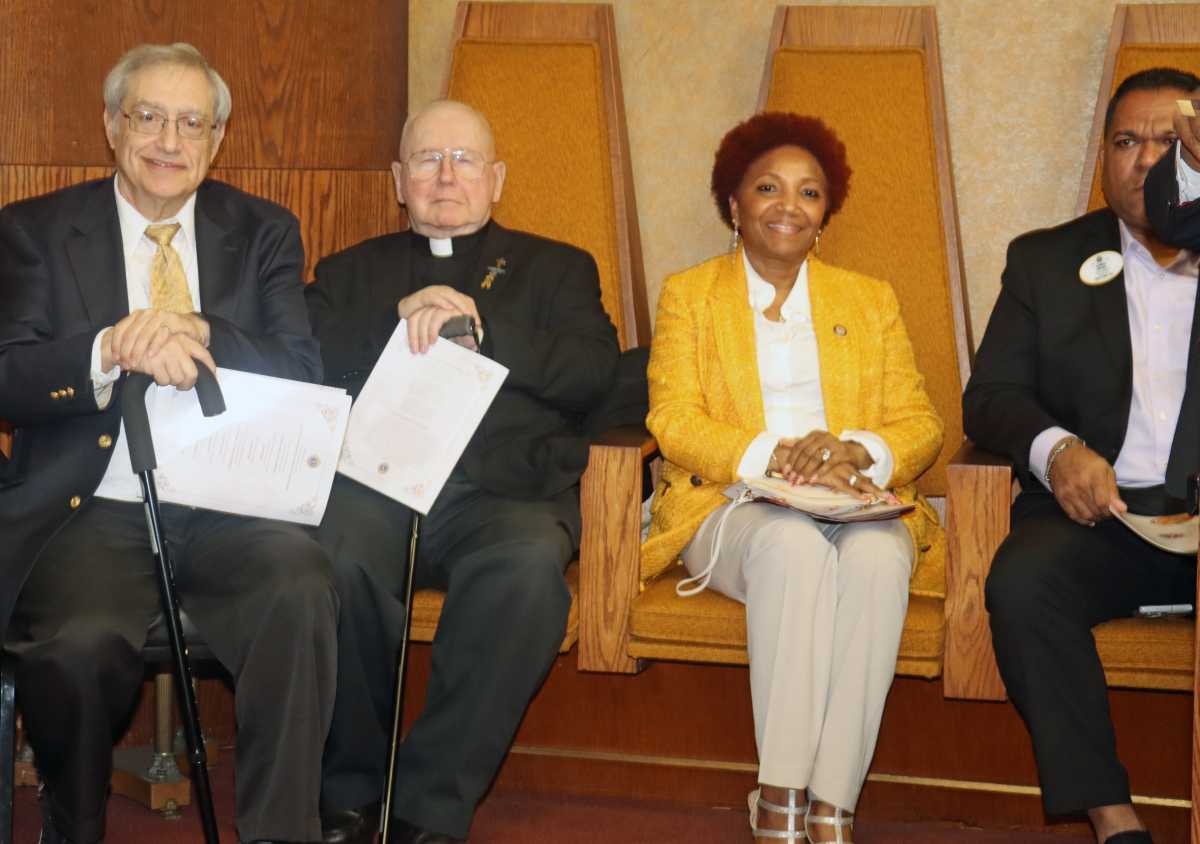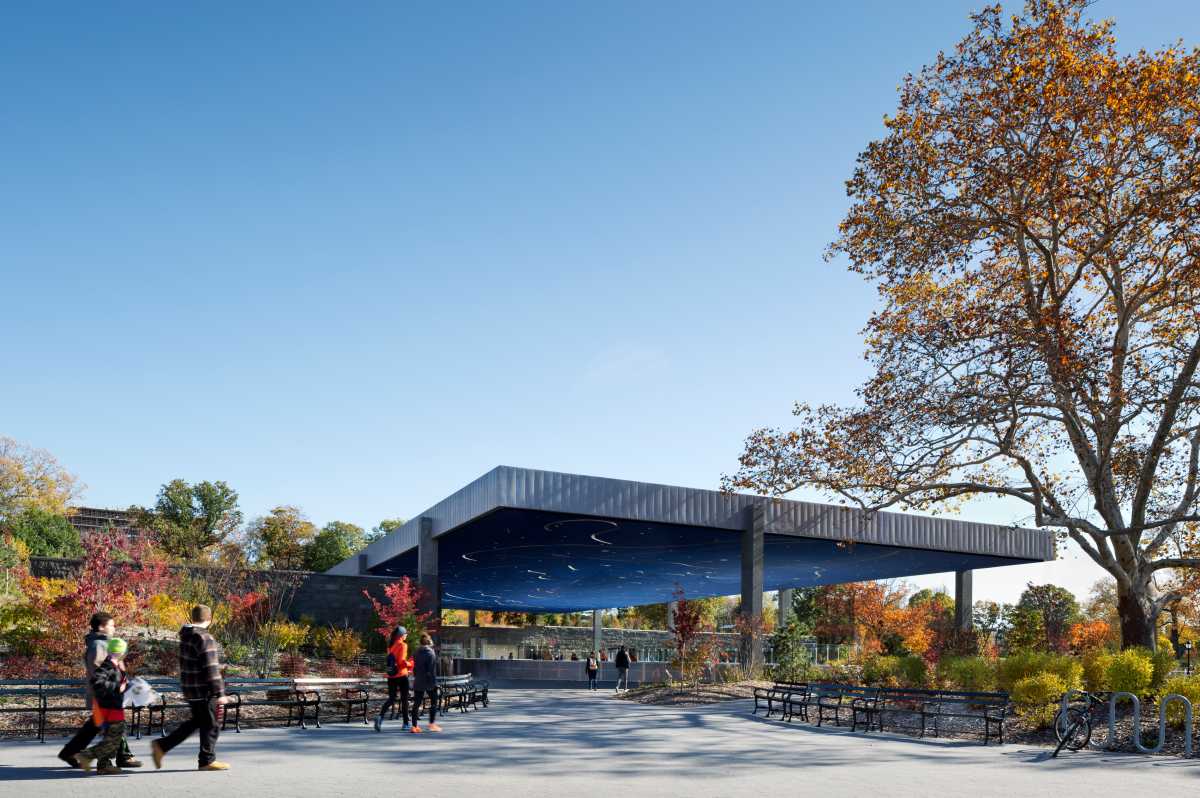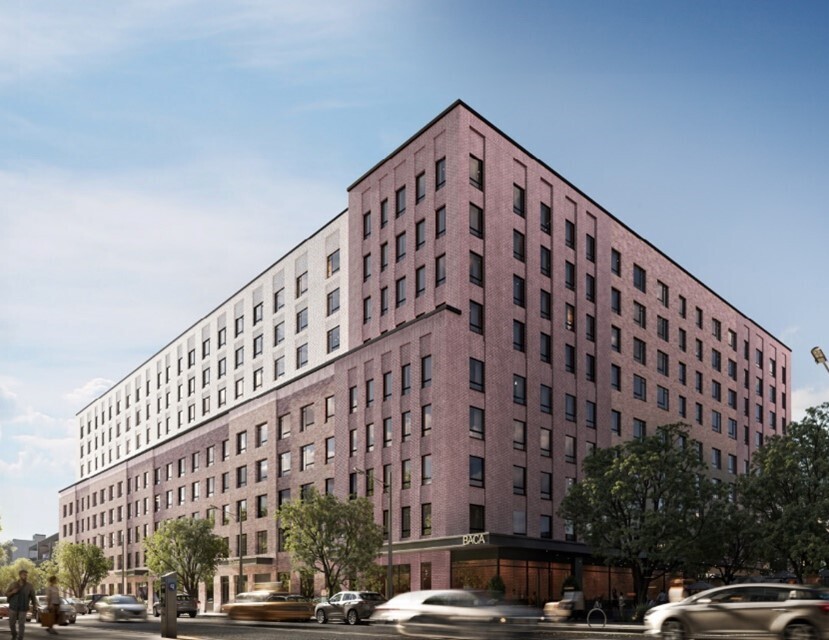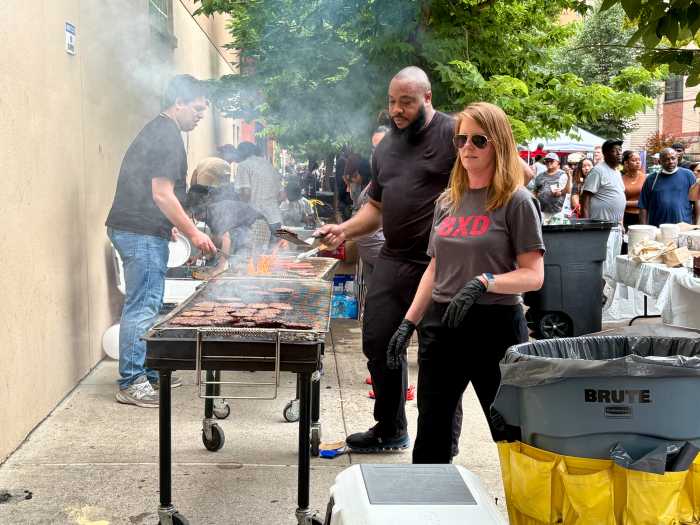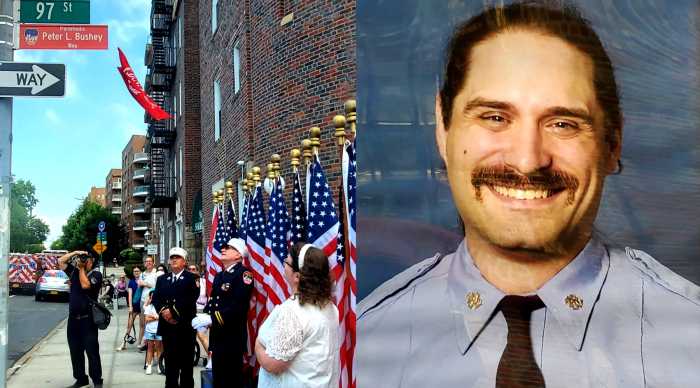
There’s a new, radical plan to save the Brooklyn bus.
Two New York University researchers have developed a complete redesign of the borough’s local bus network that they believe can stave off the MTA’s drastic drop in ridership and transform the transit option into a pleasant, timely experience.
The approach builds on what has already worked in the city and around the world: reduce the number of stops by more than half to keep buses moving; build better, physically separated bus lanes and allow riders to pay for their ride before they board the bus. While riders might have to walk longer to get to a stop, the researchers estimate that during rush hours, those commuters would never have to wait more than six minutes for a bus — and in some cases no more than two minutes.
“The system sucks. It’s not a blip; bus service has been in decline since 2003. The only way to change that is to actually do things that are hard,” said Eric Goldwyn, a research scholar at NYU’s Marron Institute. “I love the expression a ‘win-lose solution,’ but that is honest and what it is. Yes, you have to walk farther, but you’re going to have access to so much more of the borough through the bus system.”
That new access comes through what Goldwyn and Alon Levy — his partner and affiliated scholar at Marron — describe as a neater, transfer-based system that works to simplify and straighten routes along Brooklyn’s street grid to provide maximum opportunities to connect not only to other routes, but to important subway hubs and points of interest as well.
The lose, as Goldwyn puts it, is cut-and-dried: the borough’s 1,566 bus stops would be reduced to about 700 stops, and its 54 routes would drop to 37. The network’s 335 miles of bus routes would shrink to 215 miles.
The win? An increase in bus speed from the current average of 6.8 miles per hour to an estimated 9.3 miles per hour — a 40 percent improvement.
Goldwyn and Levy are also proposing the installation of bus shelters at every stop. Since there will be fewer stops, they see the installation as practical — costing between about $14 million and $50 million, based on installation prices in London, Florida and California — and almost necessary to make up for the longer walks and facilitate transfers.
“You probably don’t want to walk longer distances, but you can … sit away from the elements,” said Levy.
The pair has already pitched the plan to both the city’s Department of Transportation and the MTA. Their proposal comes several months after the MTA pledged to redesign the bus network in each borough under NYC Transit president Andy Byford’s Fast Forward modernization plan. The authority has redesigned Staten Island’s express bus system — the rollout of which has been somewhat problematic — and is now focused on the Bronx.
A DOT spokeswoman said the department welcomes outside input on how to improve the network.
“DOT and MTA are continuously working on new solutions to improve bus services for New Yorkers, and we appreciate that civic institutions are also interested in enhancing the commute for thousands of bus riders,” the DOT spokeswoman said in a statement. “Successful bus route redesign will consider access to stops, transfer time, and the allocation of street space in communities, while concentrating more service on select high volume routes, adjusting stop spacing, giving buses more priority, and improving fare collection procedures.”
Shams Tarek, an MTA spokesman, said the MTA appreciates the researchers’ efforts.
TWU Local 100 vice president J.P. Patafio said the union approved of the policies in the proposal — especially building more bus lanes that are either separated from traffic or better enforced. Though he said he needs to look at specific routes, adding that the union would oppose route consolidation if it would mean a reduction in service.
“The city DOT has been very resistant in giving us the dedicated lanes we need to move people,” he said. “They’re fearful of taking away parking spaces or a lane of traffic. We need that commitment from them that they’ll give us the space to move people.”
While the plan might seem radical, Goldwyn and Levy said it is based on very real parameters: within current bus service hours, so as to not drive up operational costs; requiring no additional depots and taking into account inaccessible subway stations to ensure bus service is still provided in those areas for commuters with disabilities. Goldwyn also surveyed about 370 bus operators to gauge how their jobs could be made easier.
The biggest hurdles, the researchers said, won’t be technical or logistical but rather political.
Tabitha Decker, the deputy executive director at TransitCenter, called the plan “extremely useful to see what’s possible with redesigns and what kind of changes need to happen,” but noted that city political leaders haven’t yet indicated that they’re up for such a task.
“There’s no doubt right now that the bus system is failing riders. They’re slow, unreliable and getting worse,” Decker said. “What we haven’t seen yet is an ambitious commitment from Mayor de Blasio to giving buses priority on the streets, and that’s sort of the missing link to bringing faster and more reliable bus service to New York.”



